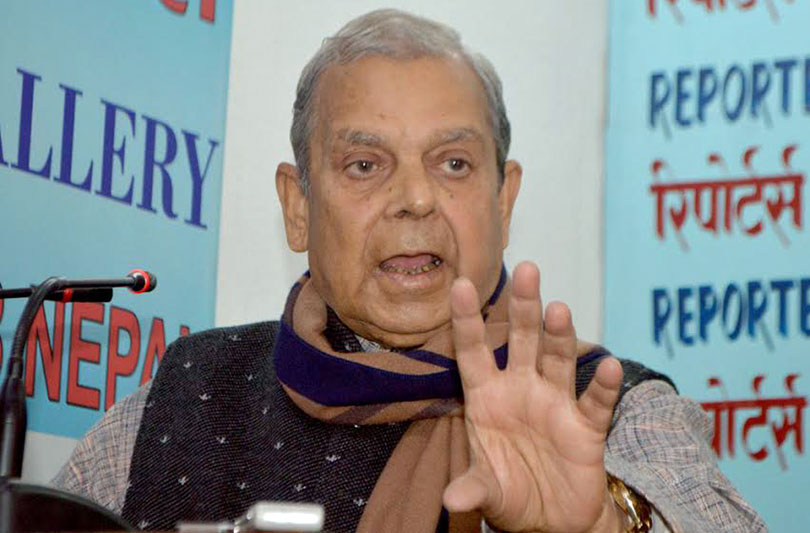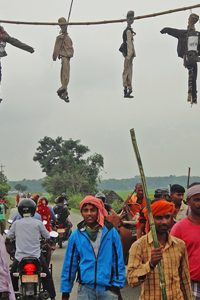
In course of a decade, Madhesh has witnessed three movements. The first eruption occurred a decade ago. The credit for establishing federalism and proportionate-inclusive polity goes to the southern plains. Still, Madhesh is not happy with the centre, Kathmandu. And it is still not happy with the Constitution promulgated through an elected Constituent Assembly. In this context, Onlinekhabar talked to political analyst Tula Narayan Sah (See the first installment of the interview.
Translated excerpts from the interview.
What went wrong?
Madhesh could have judged all agendas that the Maoists had raised as just. But the principal question was: Had the Interim Constitution incorporated the issue of Madhesh’s liberation, a Maoist agenda? This was the main agenda and that is where the Maoists made a major miss. Where the Madhesh movement failed? It failed in giving birth to a party. In Nepal, other movements have taken a different course: First, a party comes into being, it sets its agendas, then it announces a movement, guides it, the movement’s leadership holds talks. It reaches an understanding or agreement on political agendas, and creates a new situation. After that, it goes into election. In most of the cases, the party comes to power.
But in the case of Madhesh, first a movement took place and efforts were made to form a party. As elections were quite close, the party had to be constituted in haste and all sorts of people joined it. Ram Chandra Poudelji reached a 22-point agreement (with the party). But the deal was nowhere near implementation. The movement was powerful and it pulled Mahantha Thakur from the Congress. Rajendra Mahato, Upendra Yadav and Mahantha Thakur, among others, made a Morcha (front) and launched another movement. People sacrificed their lives. There were amendments in the electoral system and the country went to polls. Movement, hasty efforts aimed at forming a party, another movement and elections, all in a hurry…. Because of this haste and a weak organisation, the movement seems to be fledgling, though its agendas are clear.
Outrage against the Maoists
Anger against the Maoists was on the boil in the Madhesh as they failed to address Madhesh’s main agenda — federalism — by incorporating it into the Interim Constitution. There was also a feeling that the Maoists made mistakes in Madhesh. In the hills, first the Maoists imparted training to their cadres, then they gave them weapons and sent them to war. After the rebels started winning over the hills, they entered the Madhesh. There, first they armed untrained youths and sent them to the war. They resorted to murder, violence, looting. Security agencies, foreign and domestic forces used this scenario to their advantage. Many of these forces and agencies gathered intelligence inputs from these untrained cadres. As a result, the Maoists incurred heavy losses in Madhesh from the state. This was an eyeopener for the Maoist party. It started providing training to party cadres. But instead of receiving training, these youths started forming their own armed outfits because these armed people were already into looting.
This elicited two types of reactions. First: Maoists loot the haves, the well-off peoples. At that time, Madhesh used to take dacoits and thieves as Maoists.
(To be continued ..)
http://english.onlinekhabar.com/2017/01/22/394312
























